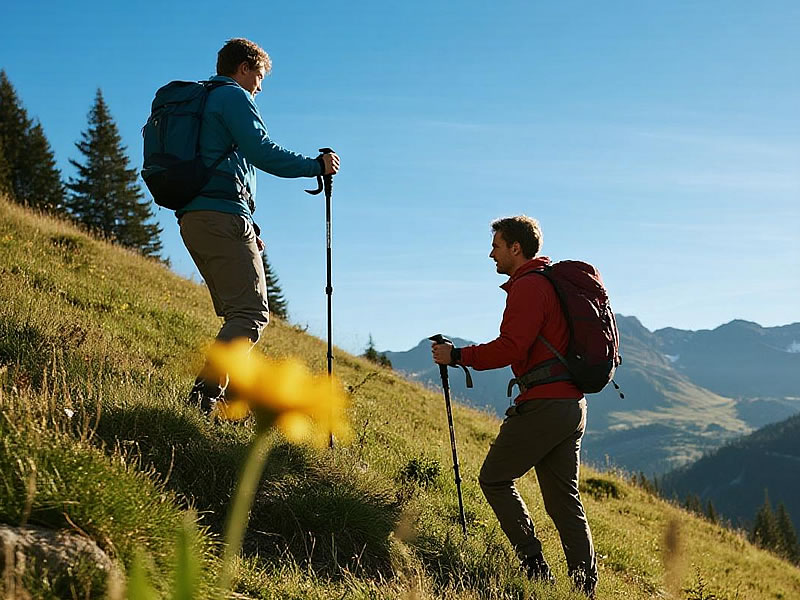How to use trekking poles uphill?
Trekking poles transform grueling climbs into efficient, joint-saving ascents. Proper uphill technique harnesses upper body power, reduces leg fatigue by up to 25%, and improves traction. Follow this science-backed method to conquer slopes confidently:

Step 1: Optimize Pole Setup
- Shorten Poles: Reduce length by 5-10 cm vs. flat terrain. Elbows should be slightly tighter than 90° when tips touch behind your feet.
- Strap Mastery: Thread hands upward through straps, then grip. Push through the strap webbing, not just handles, to engage larger back muscles.
Step 2: Perfect Planting & Power Transfer
- Plant Early & Close:Position pole tips level with or behind your uphill foot during each step.Plant vertically or at a slight backward angle – never forward.
- Drive Down & Back:Push downward and backward through the strap as you step up.Engage shoulders/lats – imagine "pushing the ground away" beneath you.
- Two-Point Rhythm:Plant both poles simultaneously with each step on steep grades.Use alternating poles (right pole + left foot) on moderate inclines.
Step 3: Body Mechanics for Efficiency
- Controlled Lean: Torso slightly forward, aligning shoulders over hips. Avoid over-leaning onto poles.
- Shorten Stride: Take smaller steps for better balance and sustained power.
- Core Activation: Tighten abs to transfer force efficiently from poles to legs.
Why This Works: Biomechanics Breakdown
- Load Distribution: Poles absorb 8-15% of body weight per step (University of Salzburg study), drastically reducing quad/knee strain.
- Propulsion Boost: Backward push creates forward momentum, leveraging arm/back strength.
- Stability: Triangulation minimizes slips on loose terrain.
- Posture Preservation: Prevents compensatory hunching under heavy packs.
Critical Mistakes to Avoid
⚠️ Planting Too Far Ahead: Creates braking force, wasting energy.
⚠️ Over-Gripping: Causes forearm fatigue – trust the straps.
⚠️ Excessive Leaning: Reduces leg drive and strains shoulders.
⚠️ Fully Extended Arms: Prevents effective force transfer; keep elbows bent.
Advanced Uphill Techniques
- Herringbone Step (Steep/Snow): Plant poles wide for balance while splay-stepping.
- Double Planting: On very steep sections, plant both poles together, then step both feet up to them.
- Pole "Catching": On rocky steps, plant one pole high for leverage pull.
Real-World Impact
Hikers using proper uphill pole technique report:
- 30% less perceived exertion (REI Field Study)
- 20% faster ascent times on 15%+ grades
- Reduced delayed-onset muscle soreness (DOMS) via eccentric muscle loading reduction (British Journal of Sports Medicine)
Conclusion: Uphill pole mastery turns your upper body into a propulsion engine. Shorten poles, plant low and behind, drive through straps, and sync with shortened strides. This technique doesn’t just ease the climb – it redefines your endurance ceiling. Practice on moderate hills first, focusing on rhythm over speed. Within 3-5 ascents, the efficiency becomes instinctive.






